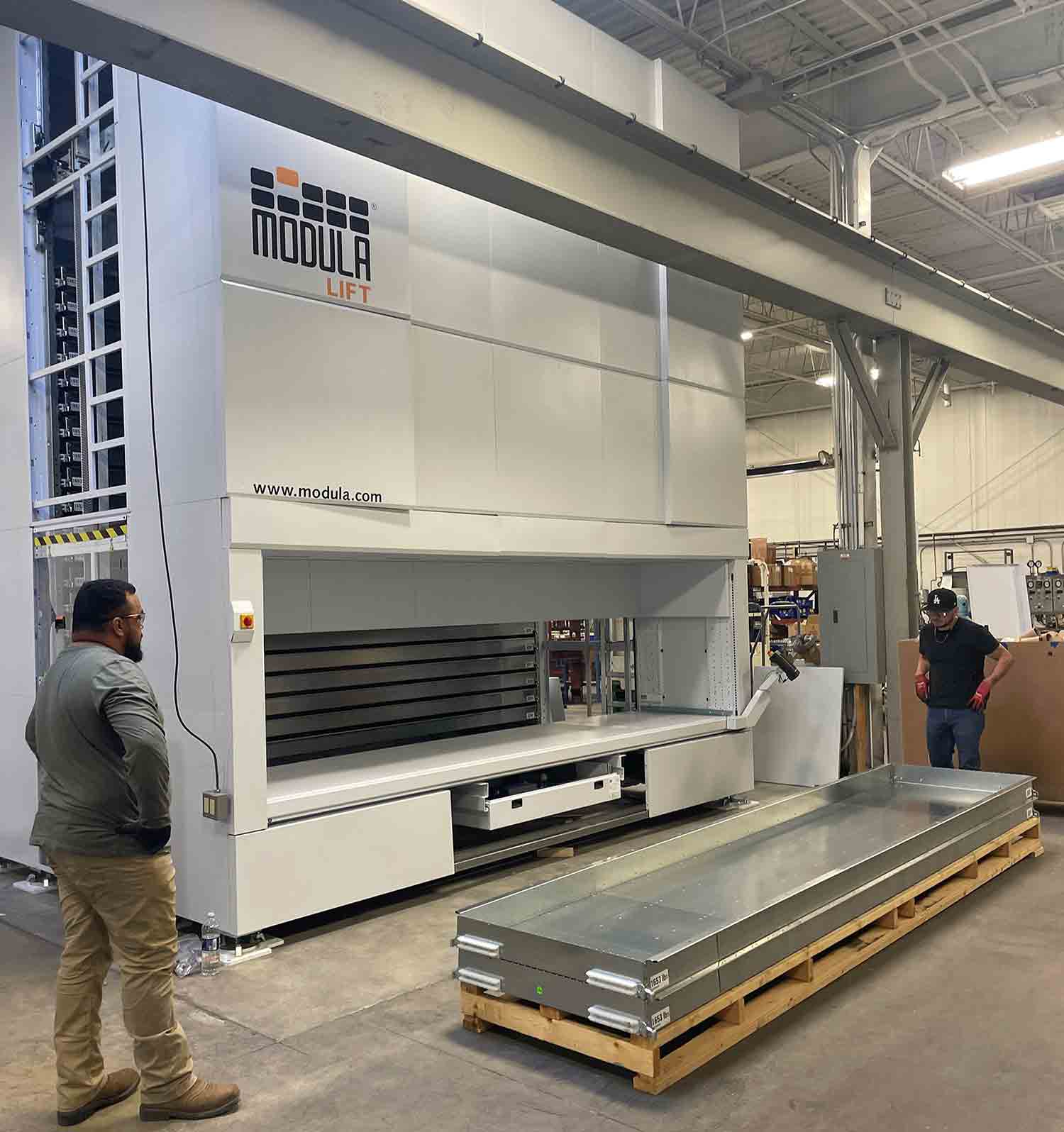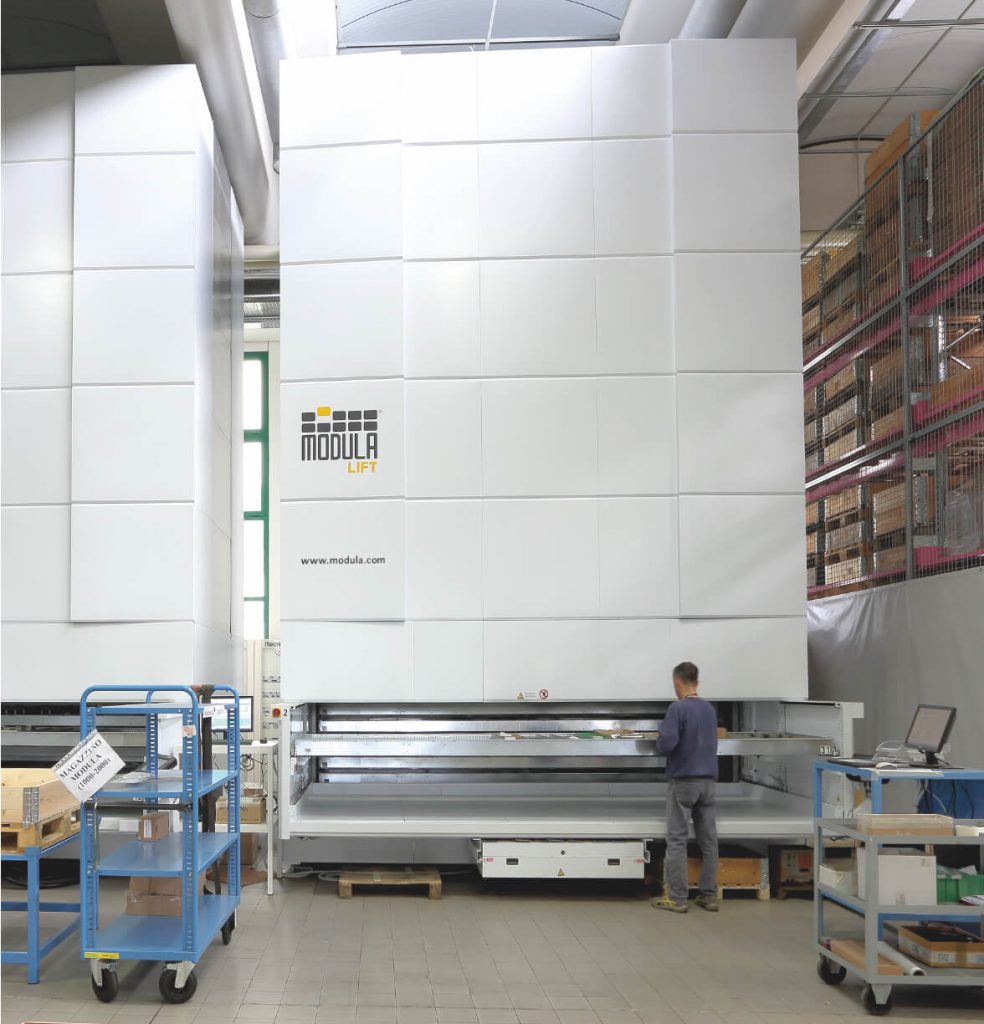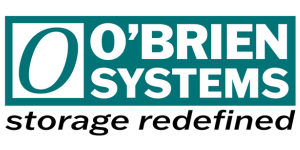Automated Storage: Past, Present and Future
Let’s talk automated storage. We have been on many site visits where we walk into an existing storage space and our minds go a million miles a minute. There are rows of static shelving and stacks of modular drawer cabinets taking up so much square footage on the ground level. Don’t get us wrong – there is a time and a place for static shelving. But when your company relies on picking and packing items to be shipped out (think internet fulfillment), picking a part to fix a machine in a fast-paced manufacturing facility or an employee generally needs quick and easy access to daily to get their job done, time is money.
The common denominator for most warehouses and commercial spaces is usable ceiling height. When considering storage solutions in these types of settings, the best way to go is up. By “up” we don’t mean levels and levels of shelving. We mean an automated storage and retrieval system that can reach as high as your space allows.
How exactly does an automated storage system work?
A Modula vertical lift module (VLM) is a high-speed, automated storage system that operates with a vertical axis motor that runs up and down the unit like an elevator to deliver the selected tray to the end user at the picking window. The user selects a tray or item from a computerized control console.
down the unit like an elevator to deliver the selected tray to the end user at the picking window. The user selects a tray or item from a computerized control console.
At the base of the machine, you will find either an internal or external picking window with the console at eye level. Just as it sounds, the internal window looks as if it’s built into the machine. An internal bay is ideal for smaller, more manageable items that can be picked by a human operator with minimal strain. The need for an external bay presents itself if the items stored are either very large or very heavy and may even need a crane or a mechanical assist to extract it.
The machine allows you to store a variety of items of different heights and weights. Over time, the machine learns your tendencies and optimizes order picking. The items picked more often are stored towards the bottom of the machine for a speedier delivery. Trays are also organized throughout the VLM in the most space efficient manner possible.
What are the main advantages of going vertical?
Now that you have a general understanding of how a VLM operates, we can jump into the benefits.
- Increase security
The items you store throughout your facility have value, some more than others. They could be difficult to come by or just generally expensive. There is already an added layer of security by housing the materials within an automated storage system as opposed to on the ground, in cabinets or drawers. Additional settings, such as only allowing specific swipe cards to access certain items, can be added for extra protection. - Save space
By taking advantage of unused ceiling height and going vertical with your storage, you can recover a ton of floor space that was previously being taken up by static shelving and cabinets. - Reduce human error and labor costs
Humans make mistakes, it’s in our nature. But machines don’t (at least not nearly as many). Less mistakes mean more time. And more time means more productive employees and reduced labor costs. - Improve employee safety
Climbing, reaching, lifting, pulling. Doing these activities repeatedly can put a physical strain on your employees. Picking from a single window at the base of a VLM reduces the chance of injury. - Enhance inventory control
Maybe you already have a great inventory control system. The software that comes along with a Modula VLM will only improve on that. The user can designate a reorder point for each item in each tray and receive a notification when it’s time to reorder. The Modula software can either replace or work in collaboration with existing inventory control systems. - Return on investment (ROI)
We get it. It’s a huge financial commitment. The numbers look big and overwhelming. But you are investing in storage technology as opposed to just the physical shelves. All projects are different in scope, size, and time, but companies have seen a return in their investment in as little as 6 months.
But will it stand the test of time?
Here’s a real-life example. Over 25 years ago, O’Brien Systems installed a Modula VLM in a large pharmaceutical manufacturing facility. Fast forward to present day. The room in which the original machine was installed is being renovated and the VLM is still fully functional and in great shape – no need to start over. Together with experienced riggers, O’Brien Systems was able to assist in the relocation of the existing unit that was over 25’ high x 7’ deep x 13’ wide.
Technology may change and improve over time, but the technology within these machines has been proven to last over decades.
What are the next steps?
 Give it some thought. Do you think a VLM could be an ideal automated storage solution for your space? If so, simply reach out to us and we’ll take care of next steps. We will come out for a site visit and evaluate your current storage methods, materials being stored and overall setting. We take all of these components into consideration and work with you to determine number of trays needed, at what size and what load capacity. O’Brien Systems then works together with Modula to figure out the absolute best VLM to fit your requirement.
Give it some thought. Do you think a VLM could be an ideal automated storage solution for your space? If so, simply reach out to us and we’ll take care of next steps. We will come out for a site visit and evaluate your current storage methods, materials being stored and overall setting. We take all of these components into consideration and work with you to determine number of trays needed, at what size and what load capacity. O’Brien Systems then works together with Modula to figure out the absolute best VLM to fit your requirement.
From there, you can look forward to a bright future with an automated storage system that will lead to more efficient inventory control, faster pick rates and happier, more efficient employees.
